Navigate the Disaster Management Cycle: Minimize Impact, Save Lives, and Build Resilience. Learn how to minimize the impact of disasters and protect communities.
Learn about the disaster management cycle, a crucial framework for effective disaster preparedness and response. Explore the stages, strategies, and key considerations to minimize the impact of disasters and protect communities. Discover the importance of planning, mitigation, response, recovery, and ongoing evaluation in the disaster management process.
Disaster Management Cycle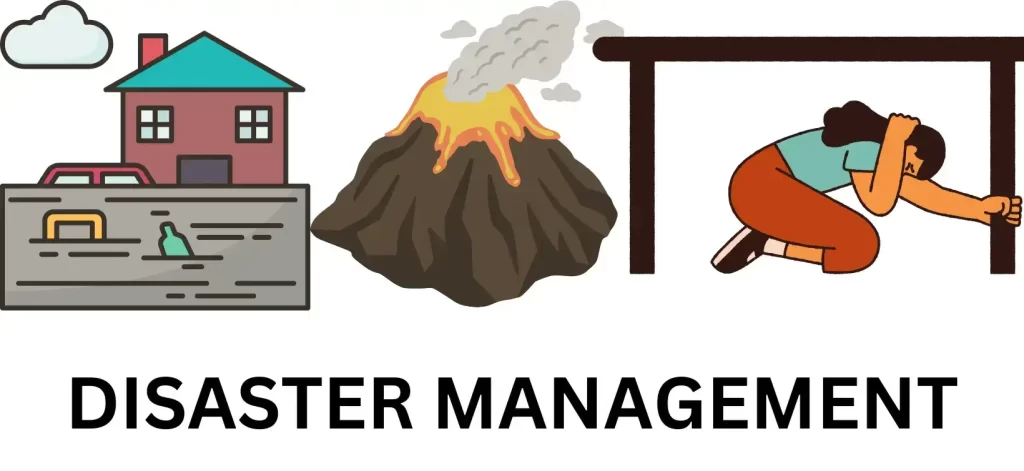
Introduction to Disaster Management: Protecting Lives and Communities | Disaster Management UPSC
Disasters, both natural and man-made, can strike unexpectedly, causing significant damage, loss of life, and disruption to communities. In such challenging times, effective disaster management plays a crucial role in minimizing the impact and saving lives. The introduction of disaster management sets the stage for a comprehensive approach that encompasses preparedness, response, recovery, and mitigation strategies to address the diverse challenges posed by disasters.
At its core, disaster management is the process of planning, organizing, coordinating, and implementing measures to prevent, prepare for, respond to, and recover from disasters. It involves a wide range of stakeholders, including government agencies, emergency responders, community organizations, non-governmental organizations (NGOs), and the affected population.
Exploring Henry Gray Hurricane Lake WMA
The primary goal of disaster management is to protect lives and property by minimizing the adverse effects of disasters. This is achieved through a series of strategic actions that are implemented before, during, and after a disaster occurs. The introduction of disaster management focuses on building a strong foundation of preparedness, which involves activities such as risk assessment, emergency planning, and training programs.
Risk assessment is a crucial component of disaster management. It involves identifying and analyzing potential hazards, evaluating their likelihood and potential impact, and understanding the vulnerabilities of communities and critical infrastructure. This assessment provides valuable insights into the risks faced by a particular area and helps in prioritizing preparedness efforts.
Emergency planning is another essential aspect of disaster management. It involves developing comprehensive plans and procedures that outline roles, responsibilities, and actions to be taken by various stakeholders during a disaster. These plans cover aspects such as emergency communication, evacuation procedures, medical response, and resource allocation.
Training programs and exercises are conducted to enhance the skills and capabilities of emergency responders and the general population. These programs educate individuals on disaster preparedness, response techniques, and the use of emergency equipment. By empowering individuals with knowledge and skills, disaster management fosters a culture of self-reliance and resilience within communities.
During a disaster, the response phase of disaster management comes into play. This phase involves the immediate mobilization of resources and personnel to address the emergency situation. Emergency responders, such as firefighters, paramedics, and law enforcement agencies, work together to rescue and provide assistance to those affected.
Following the response phase, the recovery phase focuses on restoring normalcy and rebuilding affected communities. This phase involves activities such as debris removal, infrastructure repair, and the provision of essential services. The recovery process is often a long-term effort, requiring collaboration between government agencies, NGOs, and community members.
In conclusion, the introduction of disaster management establishes the framework for a comprehensive and proactive approach to mitigate the impact of disasters. By emphasizing preparedness, response, recovery, and mitigation strategies, disaster management aims to protect lives, preserve infrastructure, and build resilient communities. Through effective coordination, training, and community engagement, disaster management plays a critical role in safeguarding lives and minimizing the devastating consequences of disasters.
Disaster Management Project | Project on Disaster Management
In the face of increasing global risks, the importance of effective disaster management cannot be overstated. A disaster management project serves as a proactive and comprehensive approach to mitigate the impact of disasters, save lives, and build resilience in communities. By implementing strategic initiatives, these projects aim to enhance preparedness, response capabilities, and recovery efforts. In this article, we will explore the significance of disaster management projects and their role in creating safer and more resilient societies.
Building a Resilient Foundation:
A disaster management project begins with a solid foundation of preparedness. It involves assessing potential risks, developing emergency plans, and establishing early warning systems. By conducting risk assessments, communities can identify vulnerable areas and implement targeted measures to mitigate potential hazards. This includes infrastructure improvements, land-use planning, and public awareness campaigns.
Effective Response and Coordination:
When a disaster strikes, an efficient response can mean the difference between life and death. Disaster management projects focus on strengthening response capabilities through training, drills, and the establishment of coordination mechanisms. Emergency response teams, including firefighters, paramedics, and search and rescue personnel, are equipped with the necessary skills and resources to act swiftly and effectively.
Community Engagement and Capacity Building:
Engaging communities is a vital aspect of any disaster management project. By involving community members in planning and decision-making processes, projects foster a sense of ownership and empowerment. Training programs and workshops equip individuals with life-saving skills and knowledge, enabling them to respond effectively during emergencies. Additionally, community networks and volunteer organizations play a crucial role in providing assistance and support during and after disasters.
Technological Innovations in Disaster Management:
Advancements in technology have revolutionized disaster management projects. Geographic Information Systems (GIS), remote sensing, and real-time data analysis enable accurate mapping of high-risk areas, early detection of hazards, and rapid assessment of damages. Furthermore, social media platforms and mobile applications facilitate information dissemination, emergency alerts, and crowd-sourced assistance during crises.
Building Back Better: Recovery and Resilience:
The aftermath of a disaster requires a comprehensive recovery plan to rebuild communities and restore essential services. Disaster management projects include strategies for infrastructure reconstruction, livelihood restoration, and psychological support for affected individuals. These projects aim not only to recover but also to build back better, incorporating resilience measures to withstand future disasters.
In conclusion, a disaster management project is a proactive and multidimensional approach to mitigate the impact of disasters. By focusing on preparedness, response, community engagement, and technological innovations, these projects play a critical role in creating safer and more resilient societies. Through effective implementation and continuous improvement, disaster management projects contribute to saving lives and minimizing the devastating consequences of disasters.
Disaster Management Cycle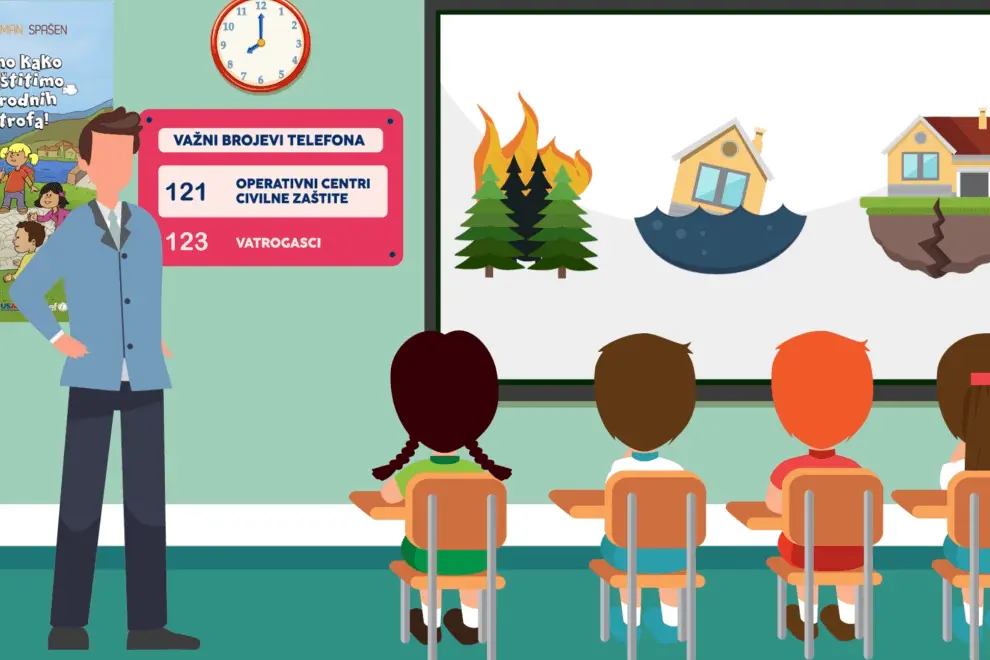
Types of Disaster Management: A Comprehensive Approach to Addressing Various Emergencies
Disasters come in various forms, each presenting unique challenges and requiring specific strategies for effective management. Understanding the different types of disaster management is essential for developing comprehensive approaches to address these emergencies. Here, we explore some of the common types of disaster management and their distinctive characteristics.
Natural Disasters:
- Natural disasters are events triggered by natural forces, such as earthquakes, hurricanes, floods, wildfires, and tsunamis. Disaster management for natural calamities involves assessing risks, developing early warning systems, implementing evacuation plans, and coordinating relief efforts. Preparedness measures include strengthening infrastructure, conducting drills, and educating communities about the risks and protective measures.
Technological Disasters:
- Technological disasters arise from accidents or malfunctions in man-made systems, such as industrial accidents, chemical spills, nuclear incidents, or infrastructure failures. Disaster management for technological emergencies requires specialized expertise and coordination with relevant industries and agencies. It involves emergency response planning, hazard mitigation strategies, and public education to minimize the impact on human health and the environment.
Health Emergencies:
- Health emergencies encompass outbreaks of infectious diseases, pandemics, and biological incidents. Disaster management for health emergencies focuses on surveillance, early detection, and rapid response. It involves implementing measures like quarantine, contact tracing, vaccination campaigns, and public health communication to prevent the spread of diseases and protect public health.
Environmental Disasters:
- Environmental disasters encompass events that cause severe damage to ecosystems and the environment. This includes oil spills, deforestation, pollution incidents, and climate change impacts. Disaster management for environmental crises involves mitigation efforts to prevent or reduce the occurrence of such disasters. It also includes restoration and conservation measures to rehabilitate affected ecosystems and promote environmental sustainability.
Humanitarian Crises:
- Humanitarian crises arise from conflicts, war, or displacement of populations. Disaster management for humanitarian emergencies focuses on providing immediate relief, ensuring access to basic needs like food, water, and shelter, and protecting vulnerable populations. It involves coordination with humanitarian organizations, implementing refugee or internally displaced persons (IDP) camps, and facilitating long-term recovery and resettlement programs.
Cybersecurity Incidents:
- With the increasing reliance on digital systems, cybersecurity incidents have become a significant concern. Disaster management for cybersecurity incidents involves preventing and responding to cyber-attacks, data breaches, and system compromises. It includes developing robust cybersecurity strategies, implementing incident response plans, and educating individuals and organizations about best practices for securing digital assets.
It is important to note that these types of disasters are not mutually exclusive, and often, multiple types can intersect or occur simultaneously. Effective disaster management requires an integrated and multidisciplinary approach that considers the specific challenges posed by each type of emergency.
In conclusion, understanding the various types of disaster management is essential for developing effective strategies to address emergencies. By tailoring approaches to specific types of disasters, stakeholders can mitigate risks, enhance preparedness, and coordinate response and recovery efforts. Through comprehensive disaster management, societies can build resilience and protect lives and infrastructure in the face of diverse emergencies.
Disaster Management Act 2005: Strengthening India’s Response to Emergencies
The Disaster Management Act of 2005 is a significant legislation enacted in India to enhance the country’s capacity to manage and respond to disasters effectively. The Act provides a comprehensive framework for disaster management, aiming to reduce the vulnerability of communities, streamline response mechanisms, and facilitate a coordinated approach among different stakeholders.
The key objective of the Disaster Management Act 2005 is to ensure a proactive and integrated approach to disaster management across all phases: pre-disaster, during the disaster, and post-disaster. The Act recognizes the importance of prevention, mitigation, preparedness, and response in minimizing the impact of disasters and protecting lives and livelihoods.
One of the notable provisions of the Act is the establishment of the National Disaster Management Authority (NDMA), headed by the Prime Minister of India. The NDMA acts as the apex body responsible for laying down policies, plans, and guidelines for disaster management at the national level. It provides direction and guidance to the State Disaster Management Authorities (SDMAs) and other relevant agencies.
The State Disaster Management Authorities, established at the state level, are responsible for implementing disaster management measures within their respective jurisdictions. They work in close coordination with the district-level authorities, known as District Disaster Management Authorities (DDMAs). These authorities play a vital role in ensuring preparedness, response, and recovery efforts are effectively executed at the grassroots level.
Under the Disaster Management Act, various measures are prescribed to strengthen disaster management capabilities. These include the development of disaster management plans, the establishment of early warning systems, capacity-building programs, and the promotion of public awareness and education on disaster risk reduction.
The Act also emphasizes the importance of a coordinated response during disasters. It outlines the roles and responsibilities of various stakeholders, including government agencies, local authorities, non-governmental organizations (NGOs), and community-based organizations. It promotes the establishment of Incident Response Systems and Emergency Operation Centers to ensure efficient coordination and communication during emergencies.
Furthermore, the Act recognizes the need for financial resources to support disaster management activities. It mandates the creation of a National Disaster Response Fund (NDRF) and State Disaster Response Funds (SDRF) to facilitate timely and adequate financial assistance for response and relief measures.
In conclusion, the Disaster Management Act 2005 is a crucial legislation that strengthens India’s response to emergencies. By providing a comprehensive legal framework, it facilitates a coordinated and proactive approach to disaster management. Through the establishment of national and state-level authorities, the Act ensures effective planning, preparedness, and response measures are in place to protect lives and minimize the impact of disasters. The Act continues to play a significant role in building resilience and promoting a safer and more disaster-resilient India.
Disaster Management Cycle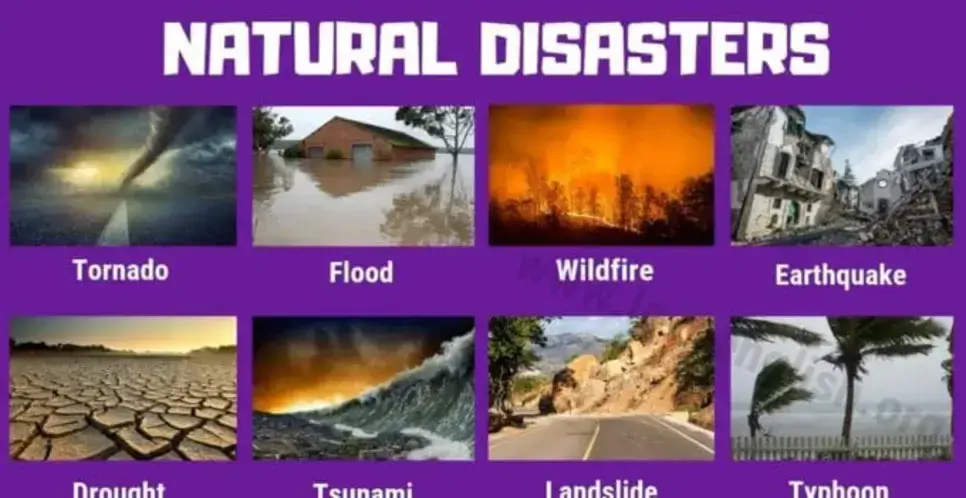
Disaster Management Project for Class 9: Building Preparedness and Awareness | Disaster Management Project Class 9 PDF
In the academic curriculum of Class 9, disaster management projects play a vital role in educating students about the importance of preparedness, response, and mitigation measures in the face of disasters. These projects aim to build awareness, instill a sense of responsibility, and equip students with essential skills to effectively manage and respond to emergencies. Let’s explore the significance of disaster management projects for Class 9 students.
Disaster management projects for Class 9 provide a platform for students to learn about different types of disasters, their causes, and the potential risks associated with them. Students are encouraged to research and analyze case studies of past disasters to understand their impact on communities and the environment. This helps in developing a holistic understanding of the importance of disaster management.
One of the key objectives of these projects is to promote preparedness among students. Students learn about the significance of creating emergency plans, developing evacuation strategies, and identifying safe locations during disasters. They are encouraged to prepare disaster supply kits that include essential items like food, water, first aid supplies, and communication tools. These activities help students develop a proactive mindset and be better prepared for emergencies.
Disaster management projects also focus on raising awareness about the importance of early warning systems. Students learn how to recognize warning signs and understand the importance of timely alerts. They explore various methods of disseminating warning messages, including sirens, mobile apps, and community networks. By understanding the significance of early warnings, students can take prompt action and ensure their safety.
Moreover, these projects promote the concept of community engagement and participation in disaster management. Students are encouraged to organize awareness campaigns and workshops to educate their peers, teachers, and community members about disaster preparedness. They learn the value of teamwork, coordination, and effective communication during emergencies.
Through disaster management projects, Class 9 students also explore the role of technology in disaster management. They learn about the use of geographic information systems (GIS), remote sensing, and real-time data analysis in disaster risk assessment and response planning. Students are introduced to the concept of leveraging technology for early detection, monitoring, and coordination during disasters.
In conclusion, disaster management projects for Class 9 students play a crucial role in building awareness, preparedness, and resilience. By engaging in research, planning, and community-based activities, students develop a comprehensive understanding of the importance of disaster management. These projects empower students to take proactive measures, respond effectively during emergencies, and contribute to creating safer and more resilient communities.
Disaster Management PowerPoint (PPT): Effective Visual Tools for Education and Preparedness
In the realm of disaster management, PowerPoint presentations (PPTs) serve as valuable tools for education, training, and raising awareness about various aspects of disaster preparedness, response, and mitigation. A well-designed and informative disaster management PPT can effectively convey essential information, engage audiences, and promote active learning. Let’s explore the significance of disaster management PPTs and their role in enhancing preparedness.
A well-structured disaster management PPT serves as an excellent platform to introduce the concept of disaster management to diverse audiences. It provides an overview of different types of disasters, their causes, and potential impacts. Visual aids, such as images, charts, and diagrams, can be used to illustrate key concepts, making the information more accessible and engaging.
One of the primary advantages of using PPTs for disaster management is their ability to present complex information in a concise and organized manner. PPTs allow for the effective sequencing of content, enabling presenters to cover various topics such as risk assessment, emergency planning, response strategies, and community resilience. Bullet points, subheadings, and tables can be used to highlight key points and facilitate better understanding.
Furthermore, PPTs facilitate audience engagement and interaction. They offer opportunities for active learning through interactive elements, such as quizzes, case studies, and group discussions. PPTs can incorporate videos, animations, and simulations to simulate real-life disaster scenarios, allowing participants to understand the challenges faced during emergencies and the appropriate response actions.
Visual elements in PPTs, such as photographs, maps, and infographics, help in conveying information effectively and enhancing audience comprehension. For example, maps can be used to showcase hazard-prone areas, evacuation routes, and locations of emergency shelters. Infographics can summarize statistical data and present it in a visually appealing and easily understandable format.
Another advantage of using PPTs is their versatility and portability. They can be easily shared and distributed among a wide range of audiences, including students, community members, and professionals. PPTs can be utilized in classrooms, workshops, seminars, and public awareness campaigns, ensuring that vital information reaches a broader audience.
However, it is essential to ensure that disaster management PPTs are designed thoughtfully and effectively. Presenters should consider the target audience, keeping the content concise, visually appealing, and engaging. It is crucial to balance the use of text, images, and multimedia elements to avoid overwhelming the audience.
In conclusion, disaster management PPTs serve as valuable tools for education, training, and raising awareness about disaster preparedness and response. By leveraging the visual and interactive capabilities of PPTs, presenters can effectively convey information, engage audiences, and promote active learning. Well-designed PPTs facilitate better understanding, enhance preparedness, and contribute to building resilient communities.
Disaster Management Cycle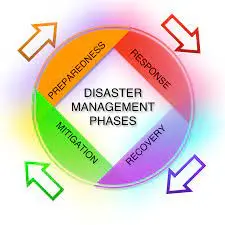
Meaning of Disaster Management: Safeguarding Lives and Communities
Disaster management refers to the systematic approach of planning, organizing, coordinating, and implementing measures to prevent, prepare for, respond to, and recover from disasters. It encompasses a range of activities aimed at safeguarding lives, minimizing damage, and ensuring the overall well-being of individuals and communities in the face of natural or human-induced disasters.
At its core, disaster management focuses on reducing the vulnerability of communities to hazards and strengthening their capacity to cope with and recover from adverse events. It involves proactive measures that encompass all phases of the disaster management cycle: mitigation, preparedness, response, and recovery.
Mitigation is the first phase of disaster management and involves efforts to minimize the impact of disasters. It includes activities such as risk assessment, hazard mapping, land-use planning, structural reinforcements, and public awareness campaigns. The goal of mitigation is to reduce the likelihood of disasters and their potential consequences.
Preparedness involves developing plans, procedures, and systems to effectively respond to disasters. This includes creating emergency response plans, establishing communication networks, conducting drills and simulations, and training first responders. Preparedness measures aim to enhance the readiness of communities and ensure a swift and coordinated response during emergencies.
Response is the phase that occurs during and immediately after a disaster. It involves the mobilization of resources, activation of emergency response systems, search and rescue operations, medical assistance, and the provision of immediate relief to affected individuals. Response efforts focus on saving lives, protecting property, and meeting the immediate needs of those affected.
Recovery is the phase that follows the response and aims to restore normalcy and rebuild communities. It includes activities such as damage assessment, debris removal, infrastructure repairs, psychological support, and the implementation of long-term recovery plans. The recovery phase focuses on ensuring the physical, social, and economic recovery of individuals and communities affected by the disaster.
Disaster management is a multidisciplinary field that involves collaboration among various stakeholders, including government agencies, non-governmental organizations, community groups, and the private sector. It requires effective coordination, communication, and resource allocation to ensure a comprehensive and efficient response to disasters.
In conclusion, the meaning of disaster management encompasses a holistic and proactive approach to safeguarding lives and communities. It involves a range of measures aimed at mitigating risks, enhancing preparedness, responding effectively during emergencies, and facilitating the recovery and resilience of affected communities. By adopting a comprehensive and integrated approach to disaster management, societies can better protect themselves from the adverse impacts of disasters and build a safer and more sustainable future.
Disaster Management Cycle
What is Disaster Management? A Comprehensive Approach to Addressing Emergencies
Disaster management refers to the systematic and coordinated approach taken to prepare for, respond to, and recover from disasters. It involves a range of measures and strategies aimed at reducing the impact of disasters on individuals, communities, and the environment. By employing a multidisciplinary approach, disaster management aims to minimize loss of life, protect property and infrastructure, and facilitate the recovery process.
The primary objective of disaster management is to ensure the safety and well-being of individuals and communities in the face of natural or human-induced disasters. It involves understanding the risks and vulnerabilities associated with specific hazards and developing strategies to mitigate them. Disaster management recognizes that disasters are not solely natural events but also influenced by human factors, such as poor urban planning, environmental degradation, or inadequate infrastructure.
The key components of disaster management include:
- Risk assessment: This involves identifying and assessing potential hazards, analyzing their probability of occurrence, and evaluating their potential impacts on vulnerable populations and infrastructure. Risk assessments help in developing appropriate strategies for disaster mitigation and preparedness.
- Preparedness: This involves developing plans, protocols, and systems to ensure effective response and coordination during emergencies. Preparedness measures include creating emergency response plans, conducting drills and simulations, training first responders, and establishing communication networks to disseminate timely information.
- Response: The response phase is activated when a disaster occurs. It involves the immediate mobilization of resources, emergency services, and relief operations to save lives, provide medical assistance, evacuate affected populations, and address immediate needs such as food, water, and shelter. Effective response requires coordination among various agencies and stakeholders.
- Recovery: The recovery phase focuses on restoring normalcy and rebuilding affected communities. It involves activities such as damage assessment, debris removal, infrastructure repairs, psychosocial support, and long-term recovery planning. Recovery efforts aim to facilitate the physical, social, and economic recovery of individuals and communities affected by the disaster.
Disaster management is a collaborative effort that involves government agencies, non-governmental organizations, community groups, and the private sector. It requires effective coordination, communication, and resource allocation to ensure a comprehensive and efficient response. Additionally, public awareness and education play a vital role in empowering individuals and communities to take proactive measures to reduce their vulnerability to disasters.
In conclusion, disaster management is a comprehensive approach that addresses the challenges posed by disasters. It involves understanding the risks, preparing for emergencies, responding effectively during crises, and facilitating the recovery process. By implementing proactive measures and fostering collaboration among stakeholders, disaster management seeks to build resilient communities and minimize the impact of disasters on human lives and the environment.
Disaster Management Cycle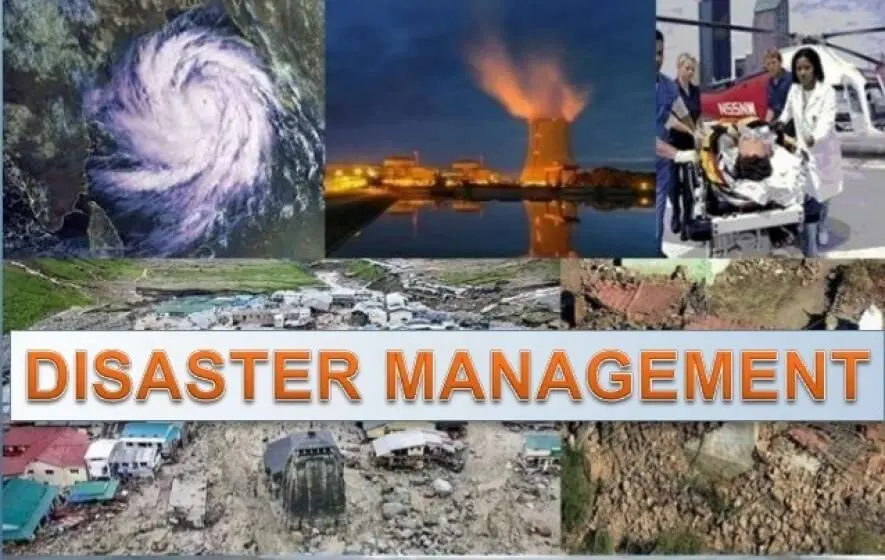
Disaster Management Cycle: Understanding the Stages
Stage 1: Preparedness
Preparedness forms the foundation of effective disaster management. It involves activities and measures taken in advance to enhance the readiness of individuals, organizations, and communities to face potential disasters. Key aspects of preparedness include:
- Developing disaster management plans: Creating comprehensive plans that outline roles, responsibilities, and procedures for various stakeholders involved in disaster management.
- Conducting risk assessments: Identifying potential hazards and assessing their likelihood and impact on communities.
- Establishing early warning systems: Implementing systems to detect and communicate impending disasters, providing adequate time for evacuation and response.
- Training and capacity building: Enhancing the skills and knowledge of emergency responders, community members, and volunteers to effectively handle disasters.
- Stockpiling essential supplies: Maintaining an inventory of emergency resources, including food, water, medical supplies, and communication equipment.
Stage 2: Mitigation
Mitigation focuses on reducing the risks associated with disasters and minimizing their potential impact. It involves taking proactive measures to prevent or lessen the severity of disasters. Key strategies for mitigation include:
- Infrastructure improvements: Strengthening critical infrastructure, such as bridges, dams, and buildings, to withstand natural disasters.
- Land-use planning: Implementing zoning regulations and building codes that consider potential hazards and limit development in high-risk areas.
- Ecosystem preservation: Protecting and restoring natural ecosystems that act as buffers against disasters, such as wetlands and forests.
- Public awareness and education: Educating communities about disaster risks, promoting safe practices, and encouraging individuals to take personal responsibility for preparedness.
- Insurance and financial mechanisms: Encouraging individuals and businesses to obtain appropriate insurance coverage and fostering mechanisms to provide financial assistance during disasters.
Stage 3: Response
The response stage encompasses the immediate actions taken during and immediately after a disaster to save lives, stabilize the situation, and meet the basic needs of affected individuals. Key elements of response include:
- Emergency coordination: Activating emergency operations centers and establishing clear lines of communication among various response agencies and organizations.
- Search and rescue: Conducting search and rescue operations to locate and extricate individuals trapped or injured due to the disaster.
- Emergency medical services: Providing medical care and triage services to treat the injured and address immediate health needs.
- Shelter and basic necessities: Establishing temporary shelters and distribution centers to provide affected individuals with food, water, clothing, and other essential supplies.
- Psychological support: Offering mental health services to address the emotional impact of the disaster on survivors and responders.
Stage 4: Recovery
Recovery involves the long-term efforts to rebuild and restore communities affected by a disaster. It focuses on the physical, economic, social, and psychological aspects of recovery. The key components of the recovery stage include:
- Damage assessment and reconstruction: Conducting thorough assessments to determine the extent of damage and formulating plans for rebuilding infrastructure and restoring essential services.
- Economic recovery: Implementing strategies to revitalize local economies, support businesses, and generate employment opportunities to ensure long-term sustainability.
- Social and community support: Providing assistance and resources to help affected individuals and communities recover socially, emotionally, and culturally.
- Housing and shelter: Facilitating the repair, reconstruction, or relocation of homes and ensuring adequate housing options for displaced individuals.
- Public health and safety: Restoring public health services, implementing disease surveillance systems, and ensuring access to clean water and sanitation facilities.
Stage 5: Evaluation
The evaluation stage is essential for assessing the effectiveness of the disaster management cycle and identifying areas for improvement. Key elements of the evaluation stage include:
- Lessons learned: Conducting thorough reviews and analysis of the entire disaster management process to identify strengths, weaknesses, and lessons learned.
- Stakeholder feedback: Seeking feedback from various stakeholders, including community members, responders, and government agencies, to gain insights into their experiences and perspectives.
- Performance evaluation: Assessing the performance of response agencies, organizations, and individuals involved in the disaster management cycle.
- Updating plans and policies: Incorporating the lessons learned and feedback into updated disaster management plans, policies, and procedures.
- Continuous improvement: Promoting a culture of continuous improvement by implementing recommendations and best practices identified during the evaluation process.
Disaster Management Cycle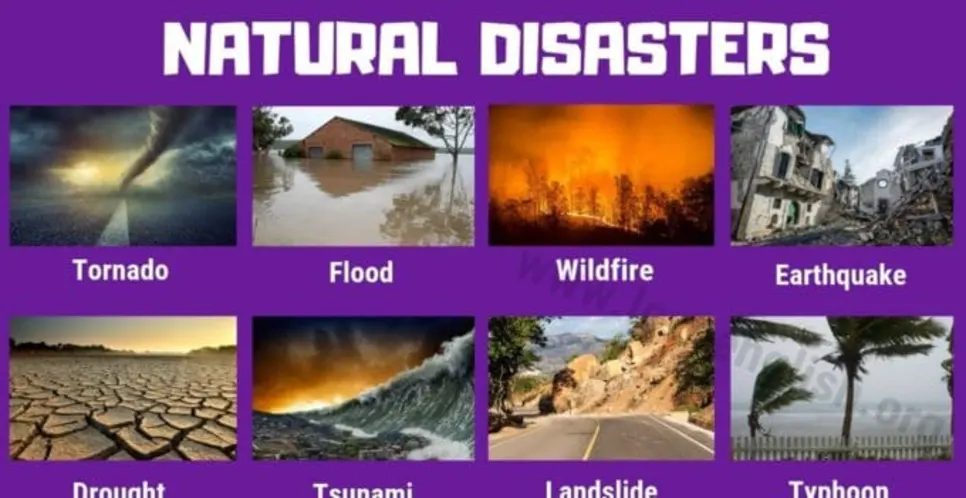
FAQs about the Disaster Management Cycle
Q1: What is the purpose of the disaster management cycle?
The disaster management cycle aims to provide a structured approach to mitigate the impact of disasters, facilitate effective response and recovery, and ensure the overall safety and well-being of communities.
Q2: How long does the disaster management cycle last?
The duration of the disaster management cycle varies depending on the nature and scale of the disaster. It can range from days for smaller incidents to years for major disasters with long-lasting effects.
Q3: Who are the key stakeholders involved in the disaster management cycle?
Key stakeholders in the disaster management cycle include government agencies, emergency responders, community organizations, non-governmental organizations (NGOs), healthcare providers, volunteers, and the affected communities themselves.
Q4: Can the disaster management cycle prevent all disasters?
While the disaster management cycle cannot prevent all disasters, it aims to minimize their impact and enhance preparedness, response, and recovery efforts. It focuses on proactive measures such as risk assessment, mitigation strategies, and preparedness planning.
Q5: Is the disaster management cycle applicable to both natural and man-made disasters?
Yes, the disaster management cycle is designed to address both natural disasters such as hurricanes, earthquakes, and floods, as well as man-made disasters like industrial accidents, terrorist attacks, and pandemics.
Q6: How can individuals contribute to the disaster management cycle?
Individuals can contribute to the disaster management cycle by educating themselves about potential risks, creating personal emergency plans, participating in community preparedness initiatives, and volunteering their time and skills during response and recovery efforts.
Q7: What are the 4 types of disaster management?
Emergency managers think of disasters as recurring events with four phases: Mitigation, Preparedness, Response, and Recovery.
Q8: What are the 5 principles of disaster management?
Prevention, mitigation, preparedness, response and recovery are the five steps of Emergency Management.
Q9: What is disaster management essay?
Disaster management refers to the efficient management of resources and responsibilities that will help in lessening the impact of the disaster. It involves a well-planned plan of action so we can make effective efforts to reduce the dangers caused by the disaster to a minimum.
Q10: What is the aim of disaster management?
AIM: Disaster management aims to reduce, or avoid the potential losses from hazards, assure prompt and appropriate assistance to victims of disaster, and achieve rapid and effective recovery.
Q11: What are seven 7 components of disaster management?
Be Prepared: The 7 Components of an Emergency Plan
- Planning – Work through many emergency scenarios. …
- Training – …
- Drills – …
- Education – …
- Technology – …
- Coordination – …
- Communication –
Q12: What are the 8 components of disaster management?
Disaster risk management involves activities related to:
- Prevention. Activities and measures to avoid existing and new disaster risks (often less costly than disaster relief and response). …
- Mitigation. …
- Transfer. …
- Preparedness. …
- Risk identification. …
- Risk reduction. …
- Preparedness. …
- Financial protection.
Q13: What are the characteristics of disaster?
Drabek (1986, 46-47), state that disasters have six characteristics that differentiate them from emergencies: (1) degree of uncertainty, (2) urgency, (3) development of an emergency consensus, (4) expansion of the citizenship role, (5) convergence (i.e., the sudden influx of people and material upon a disaster scene)
Q14: What is the difference between disaster and hazard?
Natural hazards and natural disasters are related but are not the same. A natural hazard is the threat of an event that will likely have a negative impact. A natural disaster is the negative impact following an actual occurrence of natural hazard in the event that it significantly harms a community.
Q15: What is an example of a disaster?
Examples include war, social unrest, stampedes, fires, transport accidents, industrial accidents, conflicts, oil spills, terrorist attacks, and nuclear explosions/nuclear radiation. Other types of induced disasters include the more cosmic scenarios of catastrophic climate change, nuclear war, and bioterrorism.
Disaster Management Cycle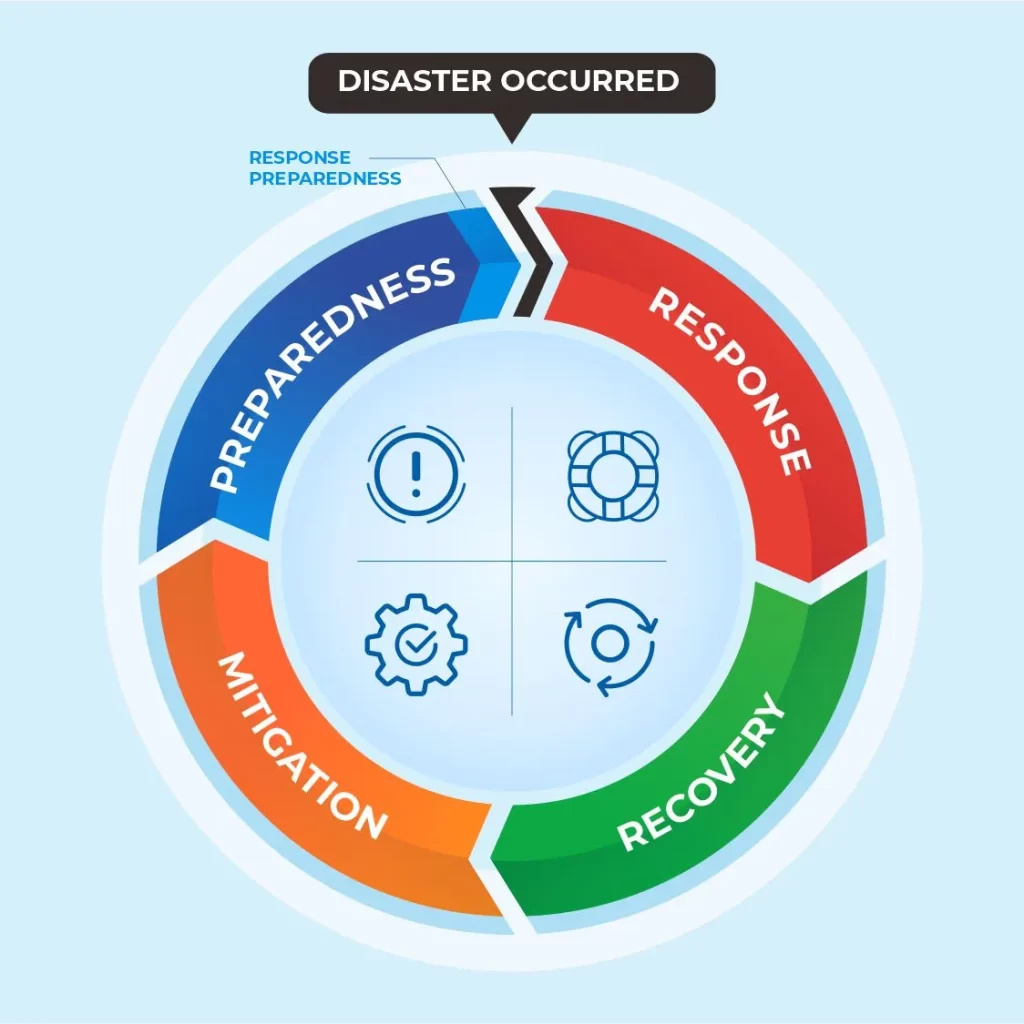
Conclusion | Conclusion of Disaster Management Cycle
The disaster management cycle serves as a vital framework for effectively addressing the challenges posed by disasters. By following the stages of preparedness, mitigation, response, recovery, and evaluation, stakeholders can minimize the impact of disasters, save lives, and ensure the long-term recovery and resilience of communities. It is essential for governments, organizations, and individuals to collaborate and invest in disaster preparedness and management to protect lives and safeguard the well-being of communities. The disaster management cycle is an ongoing process, requiring continuous improvement and adaptation to changing risks and circumstances




